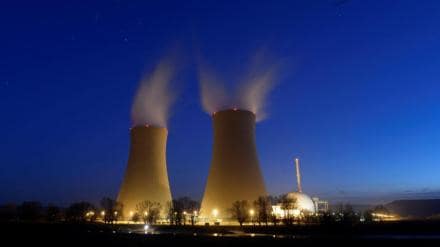By Alexander Nakhabov, PhD
Even now, with two power units in operation and four more under construction, Kudankulam nuclear power plant (NPP) is the biggest nuclear power plant in India, which provides clean electricity in safe and stable 24/7 manner. Nuclear power today is extremely powerful and reliable as an energy source. However, a challenge of using this technology is dealing with the spent nuclear fuel it produces during NPP operation.
The main goal of a nuclear power plant is the generation of electrical power with undoubted priority of safety. Thus, the design basis of Kudankulam NPP comprises the system of protection barriers which prevents release of radioactivity in the environment in all possible abnormal situations which could happen. There are four protection barriers – the nuclear fuel matrix, fuel rod cladding, the system of the primary circuit and, finally, the reactor building (containment). One more barrier – biological protection, decreases radiation exposures for NPP personnel. The containment prevents radioactive release into the environment during possible natural and technogenic disasters, including earthquakes, tornadoes or aircraft crashes.
To maintain integrity and the availability of protection barriers plenty of different safety systems are provided. The key feature of Kudankulam NPP is implementation of a combination of traditional active safety systems and passive ones, which could operate without personnel input and with no power supply at all. Multiple diagnostics systems are provided for permanent monitoring of equipment during operation to detect possible abnormalities on the early stage.
Radioactive waste (the main bulk of them is low level) produced during NPP operation are not released in the environment but treated in a special way to avoid any possible exposure for personnel and population in the NPP region.
Fresh nuclear fuel (uranium dioxide) has a very small level of radioactivity, so it could be handled with no special protection measures. In contrast, spent nuclear fuel has rather high radioactivity due to nuclear fission by-products, so in this case specially designed equipment and techniques are needed. As usual, fuel is used in the reactor core for several years, after that it is considered as a spent fuel. During refuelling outage, the spent nuclear fuel is unloaded from the reactor vessel and transferred to the storage pool. This storage pool is located nearby inside the same containment, so it is perfectly protected against any possible external threats. The storage pool is always filled with pure demineralized and borated water which is constantly recirculated to cool down the spent fuel. The pool is a high integrity concrete construction which is additionally lined with stainless steel sheets. Thus, a spent nuclear fuel could be stored in the storage pool for an extended period of time.
After interim storage in the NPP storage pool for several years, the spent nuclear fuel will be transported to a temporary disposal site. During transportation the spent nuclear fuel is extremely protected by using specially designed transport containers. They are designed to minimize radiation exposure during transportation and to withstand very severe accidental occurrences which could happen, like fire, flooding, road accidents, etc.
All the time radiation conditions around the nuclear power plant are monitored in online mode by measuring units of the automated radiation monitoring system, so it is possible to ensure high efficiency of safety systems and radiation protection measures implemented in Kudankulam NPP.
Author: Alexander Nakhabov, PhD, Associate Professor, Deputy Head of the Nuclear Physics and Engineering department, Obninsk Institute for Nuclear Power Engineering of the National Research Nuclear University МЕРhI.
Disclaimer: Views expressed are personal and do not reflect the official position or policy of FinancialExpress.com Reproducing this content without permission is prohibited.
